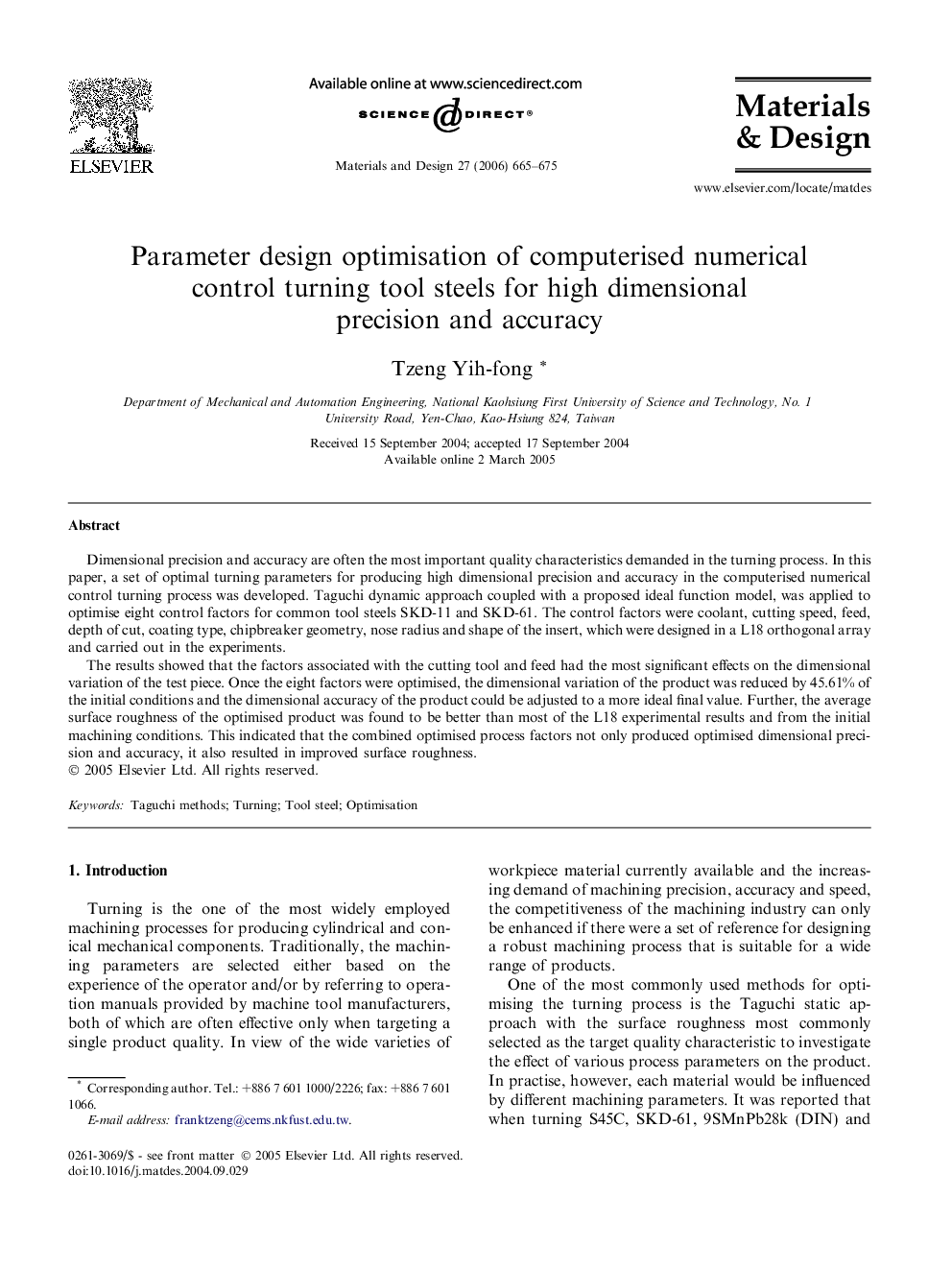| Article ID | Journal | Published Year | Pages | File Type |
|---|---|---|---|---|
| 833820 | Materials & Design (1980-2015) | 2006 | 11 Pages |
Dimensional precision and accuracy are often the most important quality characteristics demanded in the turning process. In this paper, a set of optimal turning parameters for producing high dimensional precision and accuracy in the computerised numerical control turning process was developed. Taguchi dynamic approach coupled with a proposed ideal function model, was applied to optimise eight control factors for common tool steels SKD-11 and SKD-61. The control factors were coolant, cutting speed, feed, depth of cut, coating type, chipbreaker geometry, nose radius and shape of the insert, which were designed in a L18 orthogonal array and carried out in the experiments.The results showed that the factors associated with the cutting tool and feed had the most significant effects on the dimensional variation of the test piece. Once the eight factors were optimised, the dimensional variation of the product was reduced by 45.61% of the initial conditions and the dimensional accuracy of the product could be adjusted to a more ideal final value. Further, the average surface roughness of the optimised product was found to be better than most of the L18 experimental results and from the initial machining conditions. This indicated that the combined optimised process factors not only produced optimised dimensional precision and accuracy, it also resulted in improved surface roughness.
